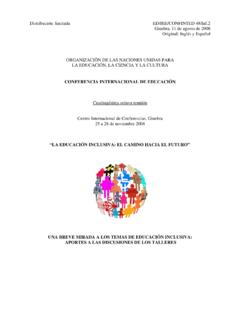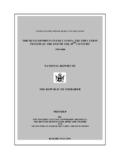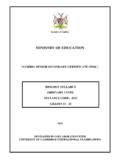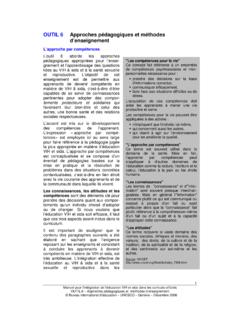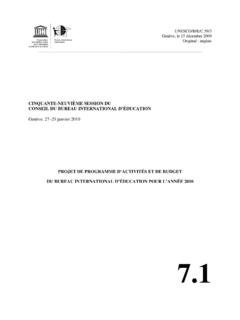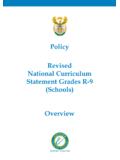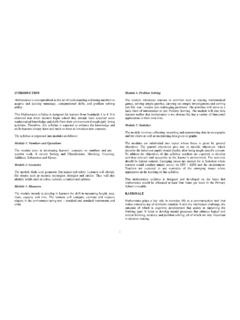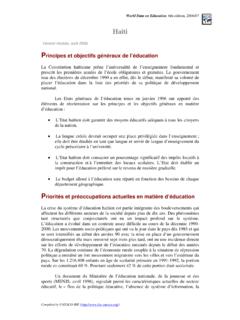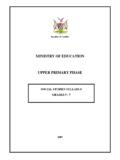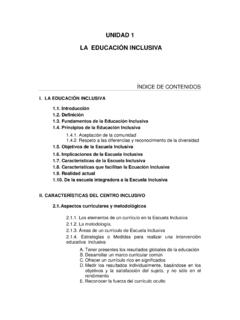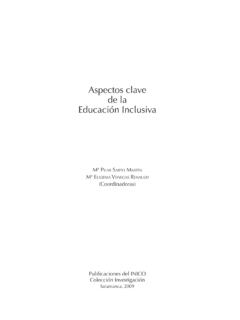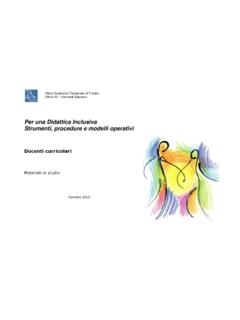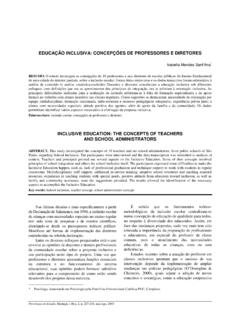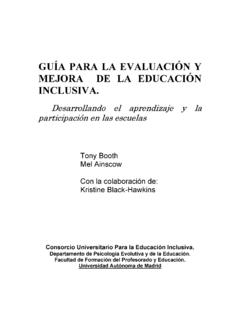Transcription of DRAFT REPORT REPUBLIC OF BOTSWANA
1 DRAFT REPORT REPUBLIC OF BOTSWANA NATIONAL REPORT ON THE DEVELOPMENT OF EDUCATION Inclusive Education: The Way of the Future Ministry of Education and Skills Development 2008 1 TABLE OF CONTENTS Major Reforms and Innovation Organizational Structure & Management of Basic Regional Education Support Cooperate Other Developments under the The aims and Purpose of Education at Each Curricular Policies, Education Content and Teaching and Learning The Legal frame Work of Main Policies, Achievements and Lesson Access to Pre-School Basic Vocational Education and Tertiary Taken to Reach Children &Adults, currently Gender Equality and Learning Outcomes Particularly Concerning the efforts to improve Learning Teacher The Role of Education System in combating Inclusive Approaches.
2 Scope & Public Learners and Curriculum Language of Content Teacher Learning approaches in Inclusive Instructional and Support Introduction Education has grown dramatically since independence. In terms of quality and scale, enrolments, teachers and schools, the education system is far larger than the one inherited in 1966. This is due to the priority that has been given to the development of education by BOTSWANA Government. Consistent with the United Nations Declarations, the Government of BOTSWANA adopted the Revised National Policy on Education (RNPE) in 1994. Specifically, the Policy seeks to: (i) Increase access and equity in education and training through both formal and non-formal means; (ii) Effectively prepare students for life, citizenship and the world of work; (iii) Develop a responsive and relevant training geared to the needs of the economy (iv) Improve and maintain the quality of the Education System (v) Enhance the performance and status of the Teaching Profession (vi) Provide an effective management of the Education System (vii) Ensure cost effectiveness/Cost sharing in the financing of education The adoption of the RNPE was a landmark in the provision of education as a right to all children in BOTSWANA .
3 This commitment is further reinforced by the Country s Vision 2016 which provides a long term strategy within which education and training plays a pivotal role. The Vision calls for transformation of BOTSWANA into a nation which is educated informed , prosperous, productive and innovative , compassionate, just and caring , safe and secure , open democratic and accountable , moral and tolerant and united and proud. Through its pillar of, An educated informed nation, the Vision views education as a vital mechanism for empowering citizens in economic and social participation. It 4envisages school products that can generate economic growth and employment through enhanced productivity and venture creation. The goals of the RNPE and the ideals of Vision 2016 are realized through the National Development Plans which provide a framework for the country s development.
4 Although the NDP 9 plan is coming to an end in March 2009, it aims at; Increasing access and equity at all levels to provide Batswana with the opportunity for continued and universal education; Improving quality and relevance with the view to providing an education that is appropriate and competitive and that will enable learners to achieve their full potential, secure employment relevant to the local and global market needs, and live meaningful lives; Developing information communication and technology (ICT) to enable students acquire key skills of computer literacy and to improve monitoring of the development of education and training; Maintaining standards of teaching, examinations and research in tertiary education through Tertiary Education Council and establishment of the BOTSWANA Examinations Council to develop relevant assessment procedures; Strengthening the response to HIV and AIDS by promoting behavioural change, prevention and mitigation; Improving productivity and service delivery; by adopting innovative measures such as the Performance Management System.
5 Strengthening partnerships with the private sector and other stakeholders to complement government efforts in the provision of education. 5 These objectives have been achieved through a number of strategies that were put in place to develop the necessary learning skills, competencies and achieve social participation. Major reforms and innovations introduced Organizational, Structure and Management of Education System The structure of the Ministry was based on an Organization and Methods Review Exercise of 1992. This structure had nine departments and four divisions. However, current developments and demands for specialised skills in specific areas of the economy led to a review of the structure and functions of the Ministry in order to streamline those functions and improve service delivery.
6 The review which began in 2006 was completed with the adoption of a new structure of the Ministry of Education and Skills Development that was approved by Parliament in March 2008. This was a response to the massive expansion and growth which required enhanced management and supervisory structures at regional level and more focused monitoring and evaluation by the Ministry. The increased enrolments and number of schools; the expanded mandate of the Ministry to include pre-school education and the high demand for out of school education placed considerable strain on its structures to provide quality education. The Revised National Policy on Education (RNPE) recommended integration of emerging contemporary issues such as HIV and AIDS, environmental education, gender awareness, population and family life education, life skills education and ICT in the curriculum.
7 In order to implement these recommendations effectively, the Ministry needed a consolidated structure that would comprehensively address these issues through various strategies. 6 The Ministry of Education has in the past adopted decentralization of its structures and functions to the regions, as one of its strategies to improve efficiency and timely service delivery to its clientele. However, decentralization has not been effective in delivering the Ministry s mandate as it was not well coordinated. There were inconsistencies in the manner in which the regional structures were organized. For example, Department of Primary Education had six regions while Departments of Secondary Education and Teacher Training had five and twelve regions respectively. These regional structures were not even aligned to the local authority administrative structures (District Councils).
8 Besides some responsibilities were overlapping, resulting in duplication of functions among departments. These challenges and many others that have not been mentioned here have compelled the Ministry to re-align its functions in order to position itself to provide inclusive education as well as attain the Millennium Development Goals. In line with the Revised O&M, the responsibilities and functions of the Ministry of Education and Skills Development have been rationalized and streamlined into four major groupings, namely, Basic Education; Regional Operations, Education Support Services ; and Cooperate Services. These groupings will enable the Ministry to use its resources more efficiently as well as improve the quality of services to its customers. Basic Education The government s main objective is to make basic education accessible to learners of all age groups; create opportunities for lifelong learning so that individuals could attain their full potential and contribute to the economy and technological development of the country.
9 These will be achieved through the acquisition of basic skills, knowledge and attitudes essential for lifelong learning. 7In order to provide a sound basic education, it was necessary to group the following departments under basic education. Pre-Primary and Primary Education Secondary Education; Out of School education and training; Technical and Vocational Education Curriculum Development and Evaluation The first four departments will be responsible for policy development, coordination and implementation and monitoring at their respective levels while Curriculum Development and Evaluation will provide leadership and coordination in designing, monitoring and evaluation of the curriculum as well as curriculum research and provision of appropriate curriculum support materials.
10 Regional operations As indicated earlier, the expansion of the system has imposed tremendous strain on the administrative and management capacity of the education system. This has called for a revision of the organization and procedures as well as strenghtening of the existing decentralization system by developing an integrated regional structure, aligned to local authorities. This arrangement is meant to improve coordination of regional activities and to enable the Ministry to discharge the professional services of the various departments of the ministry at local level effectively. It is also meant to give the regional structures some power and authority to make certain decision without having to seek authority from the head office. Each region will be headed by a director who will supervise all the Ministry s departments at regional level.
